The EU Year of Skills came to an end on 30 April, but that does not mean the work on workforce and skills is over. Indeed, a few months ago, the Energy Efficiency Directive (EED) was published and signed into law. You may not expect this, but the EED actually comes with some explicit provisions to increase the green workforce that will already have to be implemented in 2024.
EuropeOn has just released 2 detailed reports to inform the implementation of these provisions with insight gained from our sector and our members, who have been working on these issues long before they reached the top of the net zero agenda.
EuropeOn has been vocal about this since 2019 with the #Skills4Climate campaign, and, as predicted, this topic has come under more scrutiny in the past couple years as the acceleration of climate action and increased demand for clean energy solutions have revealed to the general public how workforce constraints can hamper the energy transition. At the height of the energy crisis, consumers could have to wait over a year to have rooftop PV panels installed, as the backlog for installers was just too long.
Against this backdrop, EuropeOn has emphasised the need to better consider workforce availability in energy policy such as in the Fit for 55 package of legislations. As this is not a typical EU competence, there has been pushback to act on this aspect at EU level and especially in files that have become politicised. However, the EED managed to be adopted with some interesting new provisions.
First, we have repeatedly written here about the lack of attractiveness of sectors such as electrical contracting, and the need to raise more awareness about the diverse careers and associated benefits such a sector brings. In a similar spirit, new provisions in the EED call on the Commission, in dialogue with Member States, to “set up the framework for or design a campaign to attract more people to energy efficiency professions”, by October 2024. The topic is not new to EuropeOn and this is why we released a dedicated report establishing a list of 13 recommendations based on examples from campaigns currently run by our members.
Recommendations include the need to prioritise the promotion of technical careers in order to successfully reach Europe’s energy efficiency goals. The report also provides ideas and best practices to build a more gender balanced workforce. Learning from our members’ campaigns, we also highlight how, when relevant, allocating EU support to scaling-up existing campaigns rather than starting afresh can be both cost-effective and result-oriented.
You can find our best practices and recommendations in our report dedicated to awareness campaigns.
Second, Member States will have to “assess the gap between available and in-demand professionals” by the end of 2024 already. This is a brand new obligation, and no determined governance mechanism nor guidelines are foreseen.
This assessment should also be welcome as an opportunity, rather than just another EU obligation, as it could enable Member States to invest in a wide and thorough assessment allowing to plan ahead with educational and employment policies that will make the national energy transition a green and socio-economic success.
There are however pitfalls and best practices when conducting such an assessment, which can indeed be a delicate task. National administrations have a responsibility to ensure this assessment is based on input from stakeholders and social partners to secure accurate data (especially concerning vacancy rates for relevant job profiles). Addressing workforce gaps entails creating new jobs, and this assessment and ensuing corrective measures have an opportunity to steer job creation towards quality jobs, i.e. jobs that require fully skilled employees.
You can find our full set of recommendations in our report dedicated to workforce assessments.
